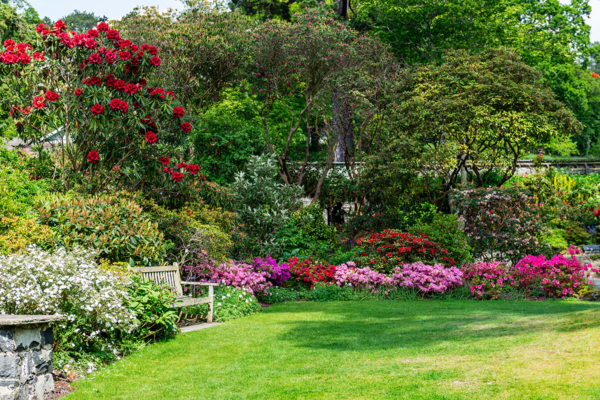Many people feel frustrated because their garden soil is not good enough, as most plants require well-draining and nutrient-rich soil to produce beautiful and thriving flowers. But don’t worry, gardening experts say that with the right choice of flowers, you can still easily create a colorful and beautiful garden landscape.
After a long day of work, taking a stroll in your beautiful garden, chatting with family, or sitting down to enjoy tea while admiring the flowers not only uplifts your mood but also helps you relax and relieve fatigue, easing work-related stress.
While having a vibrant and colorful garden is everyone’s dream, knowing how to make your garden charming is an art. You may complain about your garden’s poor soil quality, thinking you can’t grow beautiful flowers. However, many plants thrive in conditions that are less than ideal in their native habitats.
Martha Stewart, a website focusing on lifestyle information, consulted multiple gardening experts who recommended over a dozen plants that can thrive in poor soil. This article selects seven of these recommended plants.
Bee balm, also known as American mint, is a wildflower native to North America that can grow almost anywhere. “Bee balm is an excellent choice for poor soil,” says Kathy Jentz, the author of “Groundcover Revolution.”
Wondering how tough this flower is? Jentz shares that she planted bee balm in narrow, exposed areas between sidewalks and streets in her yard, where the soil faces daily salt spray and compaction due to heavy foot traffic. Despite these conditions, bee balm still thrives.
Coneflowers, native to the Eastern United States, are resilient plants known for their adaptability to clay and sandy soils. Mary Phillips, responsible for the National Wildlife Federation’s Native Plant Habitat Strategy/Certification, mentions that coneflowers have low nutrient requirements and are drought-tolerant.
Expert Jen McGuinness notes that while these flowers can tolerate poor soil, they require ample sunlight to produce large and vibrant blooms. She also recommends avoiding excessively acidic soil, as it can hinder plant growth.
Phillips explains that over time, coneflowers’ root decomposition adds nutrients to the soil.
Butterfly weed, also known as Asclepias Tuberosa, is native to North America and produces clusters of bright orange flowers. Kelly Norris, a horticulturist and author of the upcoming book “Your Natural Garden,” mentions that butterfly weed can grow in various soils, including clay and sandy soils.
Blazing star blooms white flowers. Norris states that blazing star is an excellent choice for sandy or gravelly soils and can even thrive in clay. To illustrate its adaptability, Norris witnessed blazing star flourishing on an abandoned copper mine road in Colorado, an environment that resembles the surface of the moon with very few plants surviving.
Another significant benefit of planting blazing star is its ability to attract beneficial insects to the garden.
Many gardeners favor goldenrod because it is easy to grow, drought-tolerant, heat-tolerant, and comes in a variety of colors. “Goldenrod is one of my favorite plants to grow in poor soil due to its strong tolerance for it,” says Jentz.
Lavender is a fragrant perennial plant that produces purple flowers to attract pollinating insects. Jentz adds that lavender can also thrive in “poor” soil.
“Most Mediterranean herbs, like lavender, can adapt to living in nutrient-deficient soil,” Jentz further explains.
These flowers, resembling blue stars, are commonly referred to as bluestars in the Amsonia genus. These beautiful flowers can adapt to various types of soil.
“The variety of species within this genus ranges from those growing in the southwestern deserts to the species on the southern plains,” says horticulturist Norris. “Their deep taproots ensure these plants are long-lasting and durable once established.”

